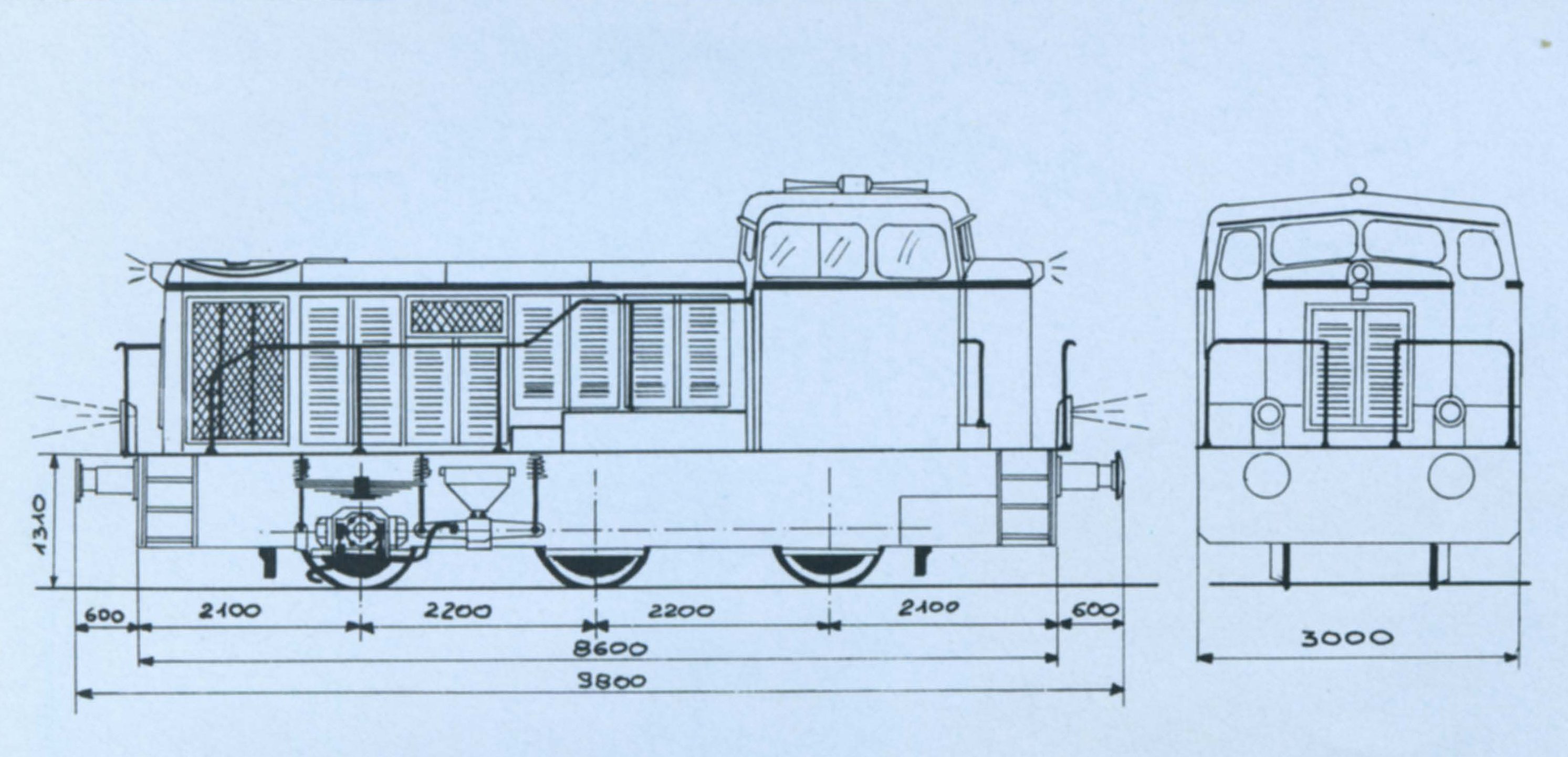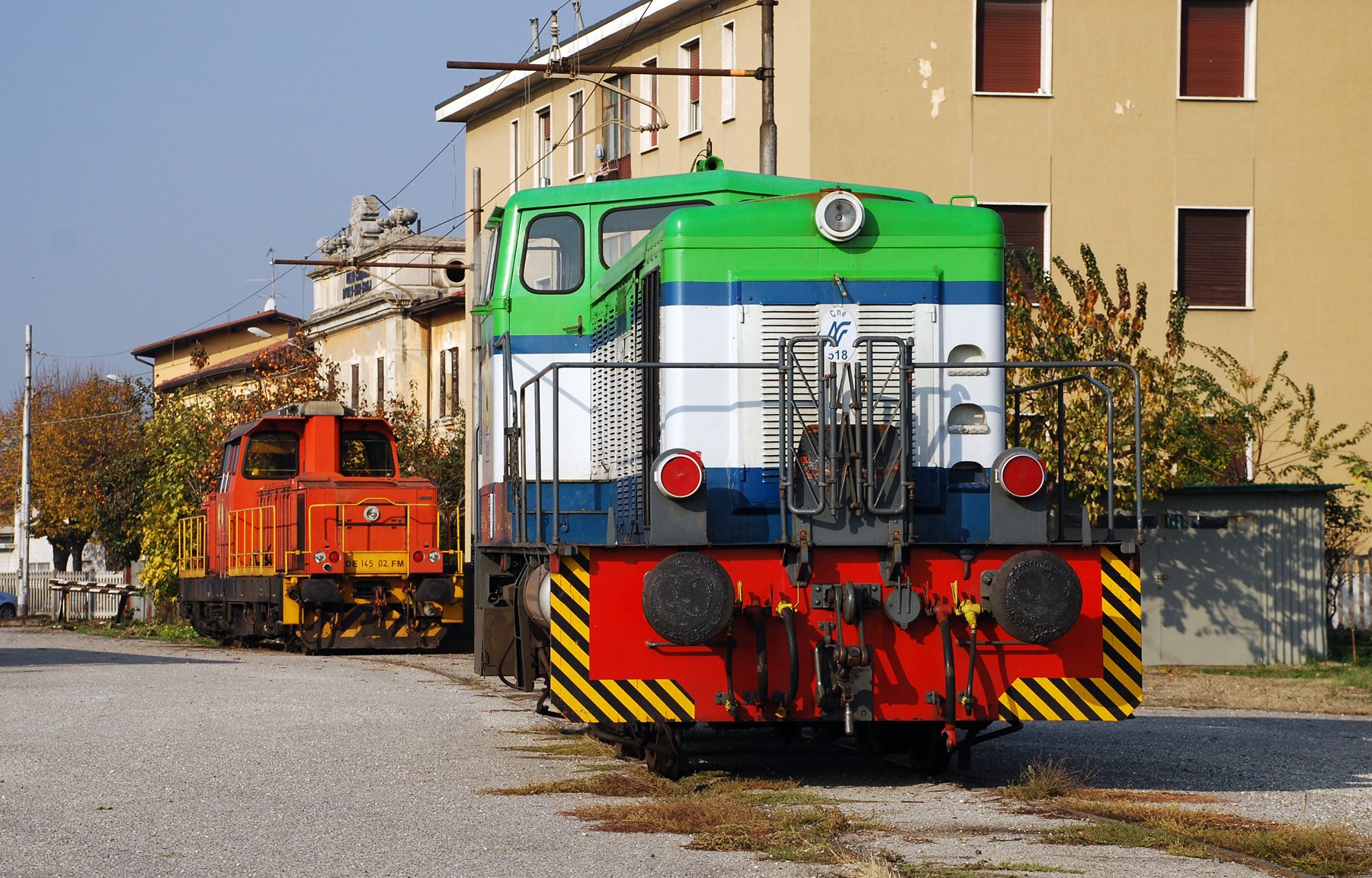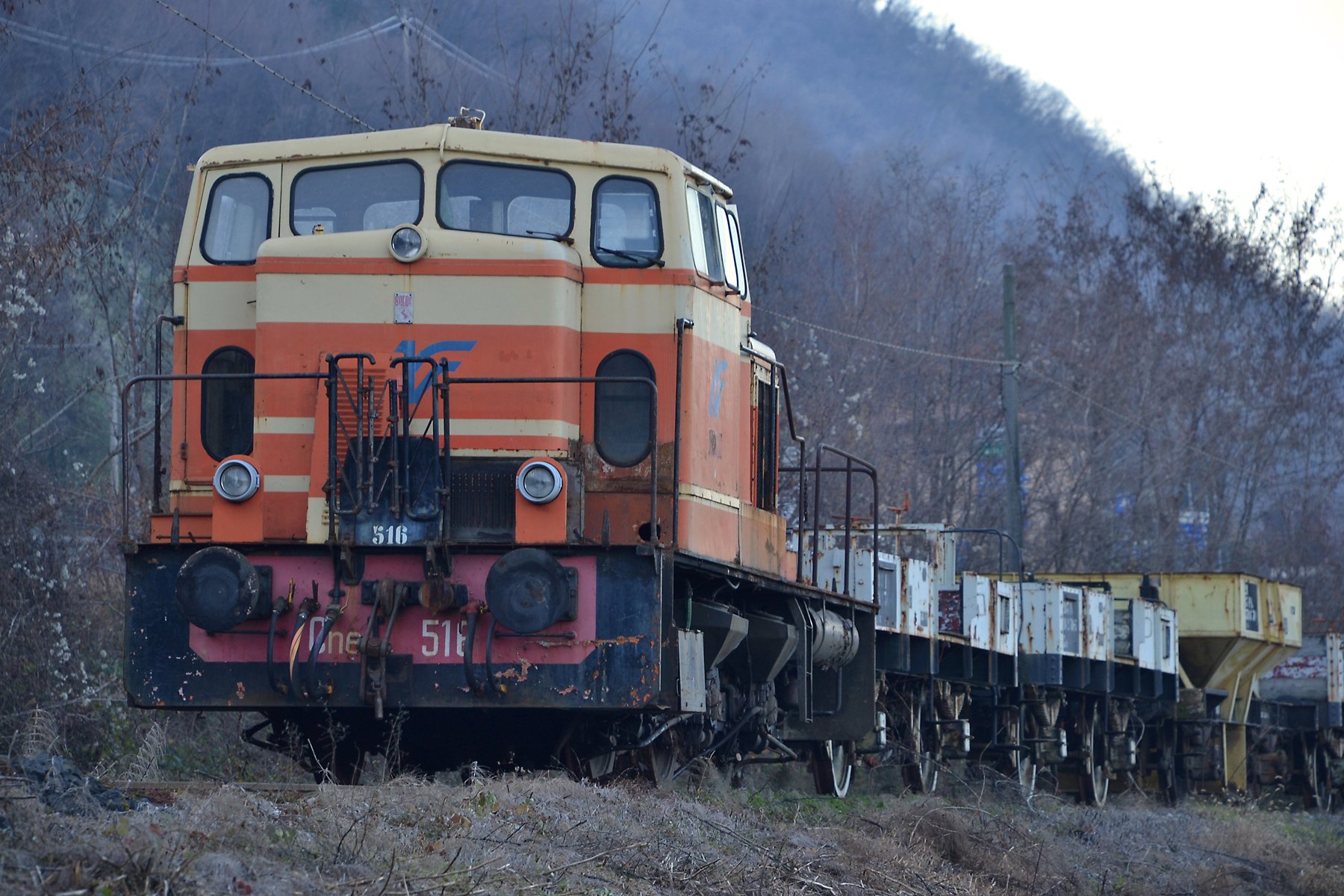At the end of the 1950s, the S.N.F.T. launched a major programme for modernising infrastructure and rolling stock, with a view to permanently eliminating steam traction. In 1960, in addition to ordering several diesel railcars, 6 diesel locomotives were also ordered from Breda. These were specially designed and were the result of a collaboration between Breda and S.N.F.T., with the use of a “simple pendulum transmission”, patented by Zaquini who was S.N.F.T. director of operations at the time. During 1961, six units (numbered 511-516) were delivered and put into service, followed in 1963 by an additional order for a seventh, numbered 510, which entered service at the start of the following year. The Cne were in service both hauling heavy goods trains to the Valcamonica, often in double traction, and pulling passenger trains, in composition with the contemporary Breda trailers. At the end of the 1970s, due to the increase in traffic, another three units were ordered from Reggiane, numbered from 517 to 519, which entered service in 1980.
CnE 510

- Costruttore: Breda
- Esercizio regolare: 1961/2000
- Velocità massima: 80 Km/h
- Distanza tra gli assi: 2.200 mm
- Tipo motore: D 26 N 12 V
- Cerchioni a nuovo Ø: 1.120 mm
- Costruzione: 1960-1963
- Lunghezza fuori tutto: 9.800 mm
- Massa in servizio: 42.720 kg
- Rodiggio: 0-3-0
- Potenza totale: 520 CV
- Raggio minimo iscrizione curva: 80 m (a 10 Km/h)
- Costruttore motori: Breda
- Larghezza: 3.000 mm
- Numero assi: 3
- Numero motori: 1
- Sforzo di trazione: 7.300 Kg a 4Km/h
- Alimentazione: gasolio
- Builder: Breda
- Regular service date: 1961/2000
- Maximum speed: 80 Km/h
- Distance between axles: 2,200 mm
- Engine: D 26 N 12 V
- Rim diameter when new: 1,120 mm
- Build date: 1960-1963
- Overall length: 9,800 mm
- Service mass: 42,720 kg
- Wheel arrangement: 0-3-0
- Overall power: 520 hp
- Minimum railway curve radius: 80 m (at 10 Km/h)
- Engine builder: Breda
- Width: 3,000 mm
- Number of axles: 3
- Numero motori: 1
- Tractive effort: 7,300 Kg at 4Km/h
- Fuel: diesel
Furono macchine pesantemente sfruttate e che dovettero essere anche affiancate da altre locomotive, a noleggio dalle F.S., per sopperire alla massiccia richiesta di servizi.
Per mancanza di pezzi di ricambio a cavallo di inizio anni Novanta vennero accantonate ben cinque delle unità della prima fornitura. Le rimanenti unità della prima serie hanno svolto servizio sino al 2000, mentre quelle di seconda serie sino al 2009, ad eccezione dell’unità 517. Quest’ultima nel 2009, una volta tolta dal servizio regolare, è stata riportata nella storica ed originale livrea e dal successivo anno è stata dedicata in via quasi esclusiva al traino del convoglio turistico “Treno dei Sapori”, lungo le sponde del Sebino sino in Franciacorta. Solo nel 2019, con nuove normative in tema di circolazione dei rotabili e relativi dispositivi di sicurezza, il Cne517 è stato tolto anche da questo servizio speciale e rimane fermo, preservato nel deposito di Iseo. Delle rimanenti unità, demolite in vari lotti tra il 1990 ed il 2018, sopravvive solamente il Cne519 accantonato nel deposito di Iseo.
These machines were heavily utilised and had to be joined by other locomotives, on hire from the F.S., in order to meet the massive demand for services.
A shortage of spare parts in the early 1990s caused five of the units from the first batch to be retired. The remaining units from the first series were in service until 2000, while those from the second series were in service until 2009, except for unit 517. This particular unit was removed from regular service in 2009 and restored to its historic original livery. From the following year it was used almost exclusively for pulling the “Treno dei Sapori” tourist consist, along the shores of Lake Iseo to Franciacorta. Only in 2019, with the new regulations regarding the circulation of rolling stock and related safety equipment, was the Cne517 also taken off this special service, and is now preserved in the locomotive depot at Iseo. Of the remaining units, scrapped in batches between 1990 and 2018, only the Cne519 survives, stored at the Iseo locomotive depot.

